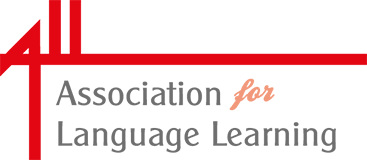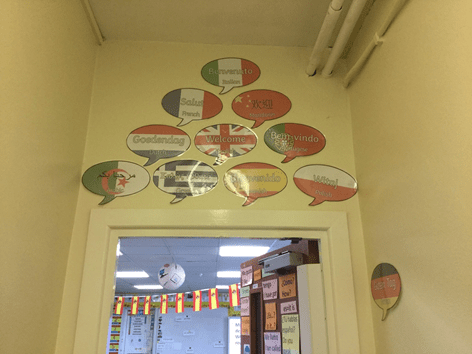I really enjoyed my day at the NPLS, meeting lots of other teachers and exhibitors, and an amazing range of talks.
What did I learn? Has the event had an impact on my practice? Most definitely a yes from me!
I enjoyed the talk by Rachel Hawkes whose work I use at our school. I was reassured by the thought that children should know about 500 high frequency words by the end of Year 6; I think that’s manageable. Rachel very carefully laid out how the A1 CEFR is often cited as an aspiration for primary languages, and it’s suggested that A1 level equates to a vocabulary size of 500 words. Rachel showed with some calculations how 3.2 words per week x 38 weeks x 4 years would deliver 500 words. There are fewer words taught but these are consolidated, revisited, with learners retaining more, and through this way of teaching learners still have every chance of leaving Y6 with an A1 size vocabulary. As I am currently reviewing my curriculum and compiling a list of high frequency words that I think would be of most value for the children at our school. To help children retain vocabulary I am now looking at starters and interweaving the vocabulary into future lessons – I can’t assume that, just because I have taught the vocabulary the class will remember it!
I found the talk by HMI Michael Wardle very informative and concise and have already disseminated the information to my SMT. As a consequence, I am now looking closely at my curriculum overview and rewriting parts of it with a particular focus on the balance between phonics, vocabulary and grammar. I have also contacted the local secondary school and would like to set up a liaison meeting about transition.
I came away too with practical ideas to apply:
- I loved the idea of a register routine , getting the older children to say a Spanish word, phrase or sentence – I tried it and was amazed by what the children could say. Some children in Year 4 were saying whole sentences ‘Tengo el triangulo negro y pequeño’ !
- I have also tried out the ideas from the German teacher about different ways of listening and learning vocabulary, including the Reporter game : as I am currently teaching the children a Spanish Christmas Carol, I split up the song into chunks with images, got the children working in pairs as the reporter and the writer. The aim of the lesson was for the children to learn a large part of the song. It really worked and the children loved it too!
- I am looking forward to the Language Bee Primary competition (launching in January 2020)! I would like our Year 5 and 6 to take part.
Finally, it’s great to know that linguists think alike! – I was so excited to hear from Liz Black about how we can use Eric Carle’s work. I already use his book El artista que pintó un caballo azul in year 2 and will revisit it in Year 3. I have devised a unit of work around the book.
Language teachers really benefit from getting together – thanks to ALLNE for running the NPLS day in York; it has made a difference for me and been very worthwhile. The cherry on the cake was to win a prize in the final plenary !
Patricia Chellal, Stanley Primary School in Blackpool

